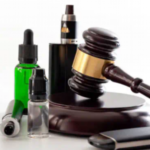Introduction to Vape Safety Misconceptions
In recent years, vaping has surged in popularity, often touted as a safer alternative to traditional smoking. However, this widespread adoption has also given rise to a number of misconceptions regarding vape safety. Understanding these misconceptions is crucial for both users and non-users to make informed decisions about vaping products.
The Belief that Vaping is Completely Harmless
One of the most common misconceptions is the notion that vaping poses no health risks whatsoever. While it is true that vaping is generally considered safer than smoking combustible cigarettes, it is not without dangers. Most e-cigarettes contain nicotine, an addictive substance that can have negative effects on cardiovascular health and brain development, especially in young adults. Furthermore, vapor can contain harmful substances, including heavy metals, ultrafine particles, and volatile organic compounds, which may pose health risks over time.
Assuming All Vape Products are the Same
Another prevalent misconception is that all vape products are equivalent in terms of quality and safety. However, the vaping market is diverse, with a wide range of manufacturers and product types. Some vape devices may be constructed with low-quality materials, leading to potential safety hazards such as battery explosions or malfunctions. It is essential for consumers to purchase products from reputable brands and verify that they adhere to safety regulations.
Misunderstanding the Risks of Second-Hand Vapor
Many believe that second-hand vapor is entirely safe and poses no threat to bystanders, akin to how some view second-hand cigarette smoke. In reality, while the risks are lower than that of traditional tobacco smoke, exhaled vapor can still contain nicotine and harmful chemicals. This exposure can be particularly concerning for vulnerable populations, such as children and pregnant women. Public awareness of the potential for second-hand vapor to pose risks is essential for creating safe environments.
The Role of Nicotine Addiction
A common misbelief is that vaping cannot lead to nicotine addiction. This is particularly concerning among young users, who might view vaping as a non-addictive alternative to smoking. However, many vaping products deliver nicotine at similar or even higher levels than traditional cigarettes, making addiction a real risk. Education about nicotine’s addictive properties is crucial to prevent the normalization of vaping among youth.
Overlooking Regulation and Quality Control

Many assume that vaping products are strictly regulated and undergo rigorous safety testing, much like pharmaceuticals. However, the reality is that the vaping industry has seen inconsistent regulation across different regions, leading to variability in product quality and safety standards. Consumers should advocate for more stringent regulations and seek information about the products they use.
Conclusion
Understanding the misconceptions surrounding vape safety is vital in fostering an informed public. While vaping may present risks that are different from traditional smoking, it is not without its hazards. Users should be cognizant of the potential health effects, product variability, and the importance of purchasing from reputable brands. Continuous education and awareness can significantly contribute to safer vaping practices and healthier community environments.




